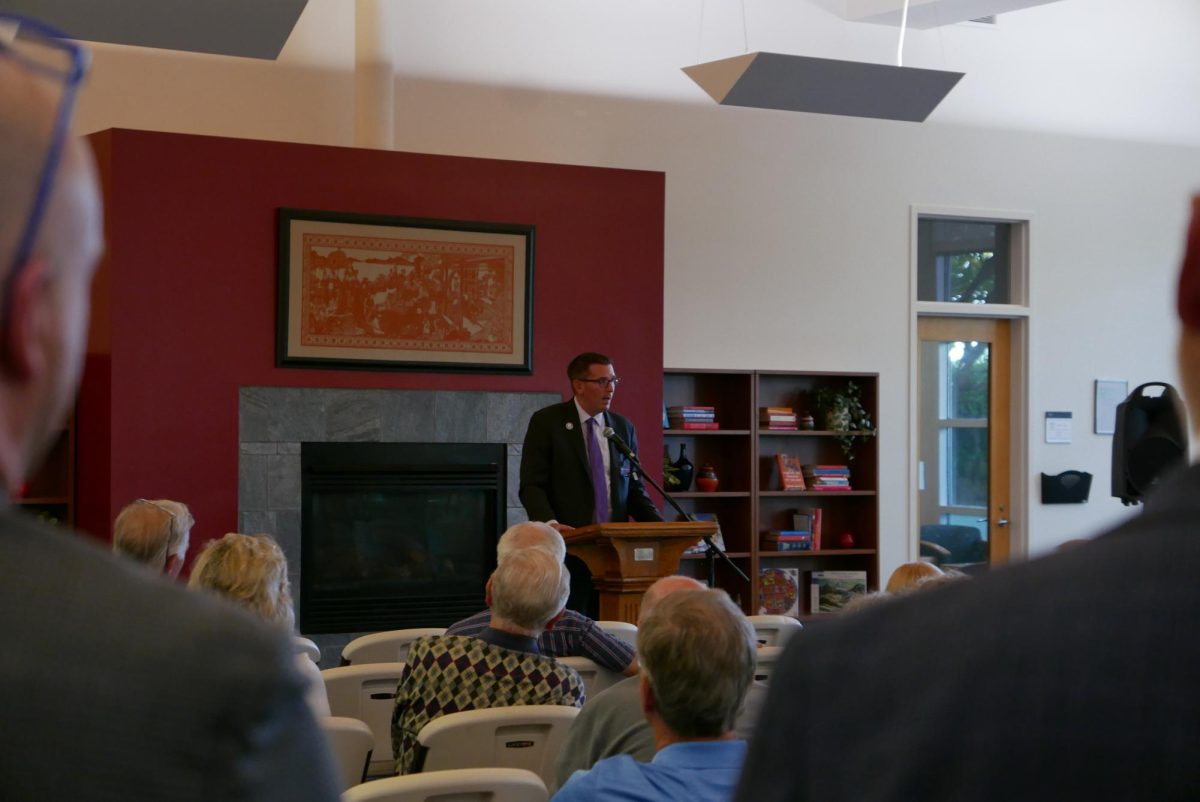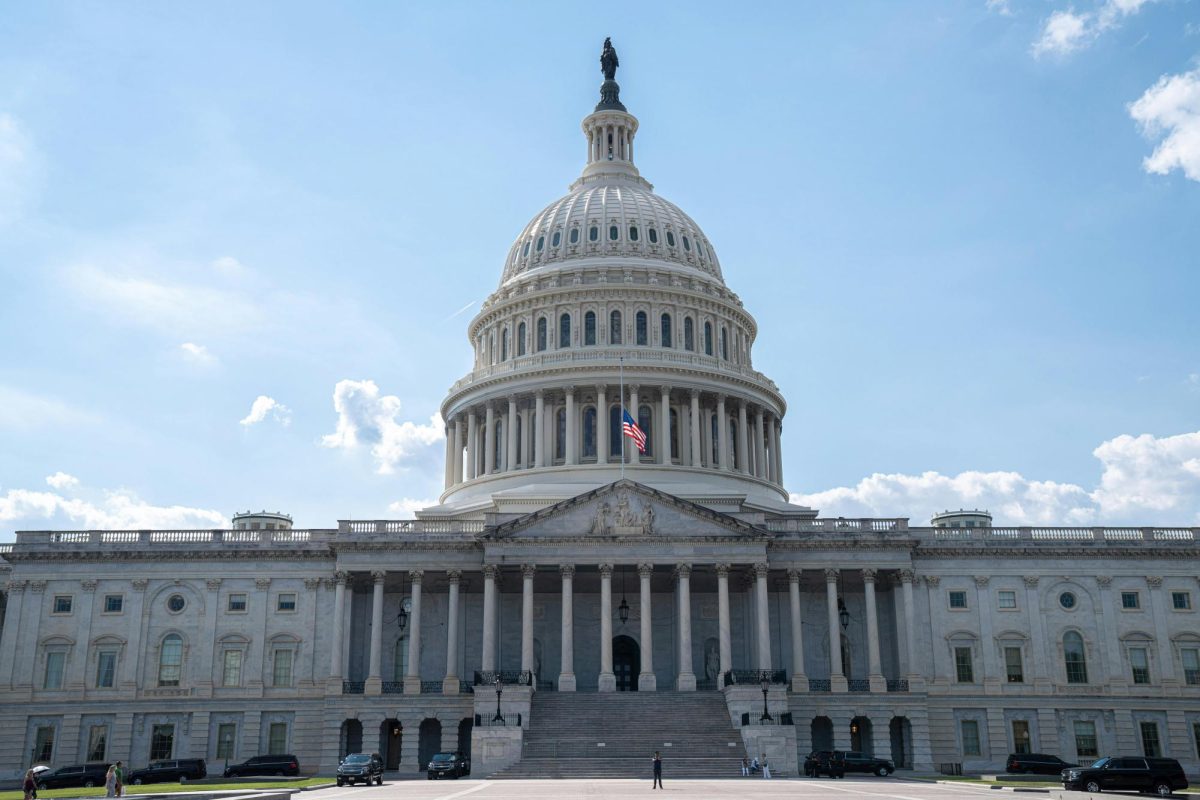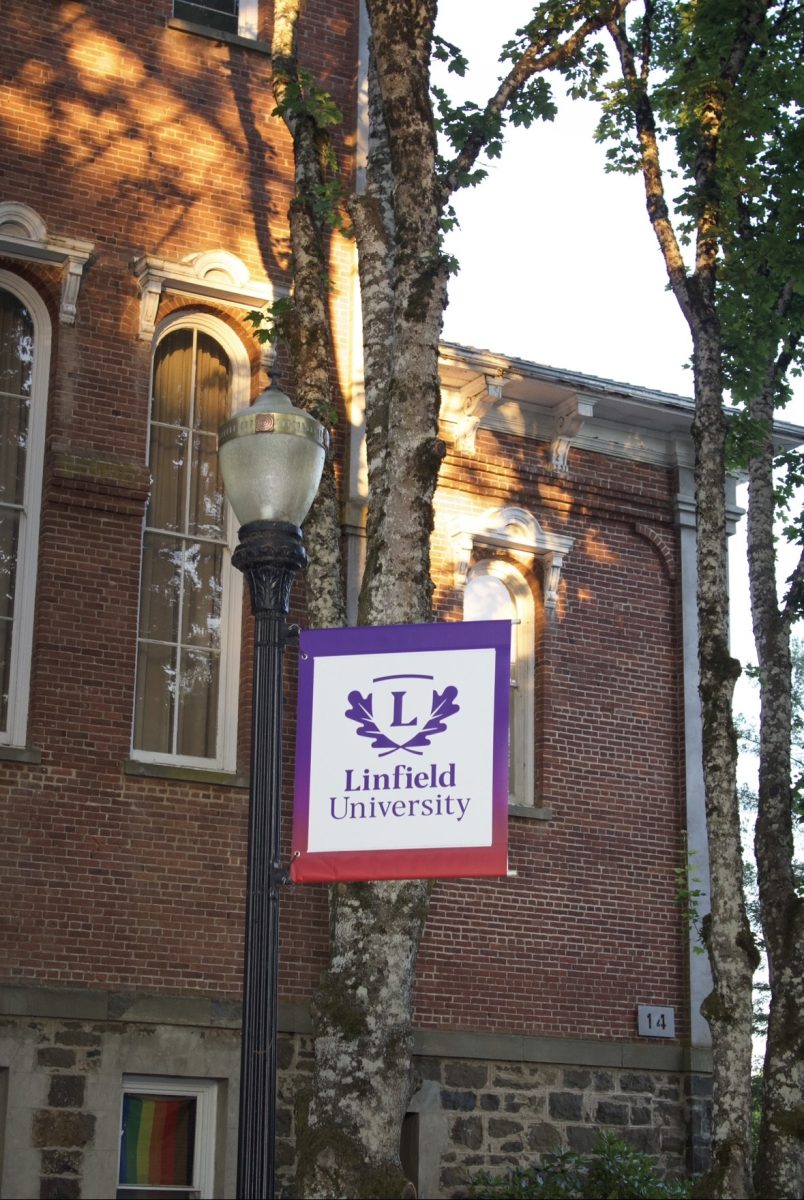Associated Students of Linfield College President senior Colin Jones proposed major ASLC bylaw changes at the Feb. 21 Senate meeting.
The changes would significantly reorganize the Senate and Cabinet. If approved by the Senate, the bylaw changes will be voted on by the student body on the March 8 ASLC election ballot.
Jones said he has noticed flaws in ASLC structure, in the Senate in particular, but it’s taken four years of involvement in ASLC to identify what he thinks are feasible solutions.
“This [proposal] is based on my personal experience and the positions I’ve held with ASLC and my discussion with Cabinet members,” he said. “What I’ve proposed isn’t necessarily even the best option, and I hope that senators will think about it and provide feedback on how to improve it.”
Here’s a look at the main changes presented in Jones’ proposal:
Senate reorganization:
The most significant reorganization suggested under Jones’ plan regarding Senate is a cut in the group’s size. Jones said Senate comprises up to 90 senators (although not exactly 90 because of unfilled seats). His proposal would reduce the maximum to about 26 senators.
“It makes each senator role a little bit more significant,” Jones said.
The reduction would also enhance the effectiveness and efficiency of Senate because fewer members leads to increased discussion, he said. Jones likened the change to a class of 100 students versus a class of 25 students; the latter group would have more meaningful conversations.
ASLC bylaws currently require every ASLC-charted club to have a senator; clubs without senators are subject to the dechartering process. Jones’ proposal would change this, too.
Instead, clubs would be grouped together, and each cluster would be responsible for choosing a senator to represent the group. Jones suggested clubs be grouped by type. For instance, one group might be activist and political clubs, such as Greenfield, Fusion and Model United Nations; another might be arts and culture, such as Hawaiian Club and Linfield Literary Arts Club (LiLAC); and another might be club sports, such as tennis and rugby.
Senators raised concerns at the Feb. 21 meeting about the size difference between these groups. One senator may represent a group of 50 students while another only represents 20. Jones said this was just a proposal, and clubs could be grouped by size, too. He said senators should consider pitfalls such as this and fix them before voting to pass the proposal.
The proposal also affects Residence Life representation in Senate. Right now, residence halls are allocated to senators by size, a system similar to the U.S. House of Representatives, and suburb residents and off-campus students can fill at-large senator positions.
But large residence halls, which can have two or three senators, are sending only one. Jones proposed that each residence hall and each suburb have one senator.
“The reality is if you’re an upper classman, you’re less likely to have Senate representation,” Jones said, explaining his reasoning for including formal representation of suburb residents.
Off-campus students can still fill at-large Senate seats, which Jones proposes are reduced from five to four. These seats will be available to individuals who represent non-ASLC organizations.
Greek organizations will also receive Senate seats under the proposal. Currently, they are allowed to fill at-large seats, but not all fraternities and sororities have chosen to do so. Jones proposed that the Interfraternity Council and the Panhellenic Council should each get one seat.
However, ASLC cannot force Greek organizations or Residence Life to have senators, so the seats are offered in an effort to make Senate representative of the whole campus and not just club members, Jones said.
And keeping the Senate representative is key to discussions about the proposal.
“I think the big question is how do you make it a more manageable, interactive, engaged body and still represent the general population,” Director of College Activities Dan Fergueson said.
Jones said a significant drawback of the proposal is that it reduces the number of leadership roles offered on campus. Fergueson agrees but said that a smaller Senate could mean increased effectiveness if it can remain representative.
“I think it really enriches the experience of the individual senators and in some way enforces them to be engaged,” he said.
Cabinet proposal:
“I was less certain that Cabinet needed to be changed, while with Senate, it was very clear to me that it was dysfunctional in some ways,” Jones said. “But at the same time I thought there were ways [Cabinet] could possibly run better and be more in tune with student needs and interests.”
To increase Cabinet effectiveness, Jones’ proposal reallocates duties and reduces the number of members from nine to eight.
In the proposal, Jones eliminated the secretary position, combined club director and student center director, renamed most of the rest and added a position: vice president of community & sustainability affairs.
The secretary’s task of taking Senate meeting minutes would fall to an ASLC office helper, Jones said. Clubs, Activities Council, the CIC and the Game Room fall under the command of the vice president of student interests. The Bike Co-Op and Sustainability Council move to the community affairs position’s responsibility.
“That position is an effort to respond to rapidly growing student interest in community service, civic engagement, environmental sustainability,” Jones said.
The vice president of community & sustainability affairs would also be in charge of planning community service outings for the ASLC Cabinet.
Other proposed changes to Cabinet roles include moving elections management from the responsibility of the secretary to the vice president, and making the vice president’s representation on the board of trustees a duty of the president.
Again, the reduction in leadership roles on campus is a drawback, but Fergueson said he’s also concerned about having eight Cabinet members.
“I personally don’t like groups in an even number,” he said.
His unease comes from the fact that even-numbered groups can vote in a tie; an odd number allows for more efficient decision making.
Concerns and hopes:
Jones and Fergueson both expressed hope that senators will seriously consider this proposal and talk about it with their constituents.
“The fear is that there won’t be any serious dialogue about it in the Senate, and it will get rubber stamped and people will just vote yes when it’s in front of them,” Fergueson said about the proposal.
Senators will discuss the proposal in depth at their Feb. 28 meeting, during which they can propose changes to the original draft before voting to pass the proposal. Jones said he encourages senators to modify his original proposal.
“I feel that we will have a thorough discussion on Monday about these proposals before any decisions are made,” junior Katie Patterson, ASLC vice president and 2011 ASLC presidential candidate, said in an e-mail. “It is important for students to understand exactly what each proposal means and how it will affect the way that ASLC is run.”
If senators approve the proposal, then it will appear on the March 8 ASLC elections ballot for approval of the student body. If they don’t approve it, then the proposal will die.
But if discussion runs too long, senators can also choose to defer the vote until the March 7 meeting, but that will leave only a single day for the student body to review the proposal before it goes to ballot the next day.
Students can read Jones’ proposal at http://www.linfield.edu/aslc/elections.html.
Kelley Hungerford/Editor-in-chief
Kelley Hungerford can be reached at [email protected].






